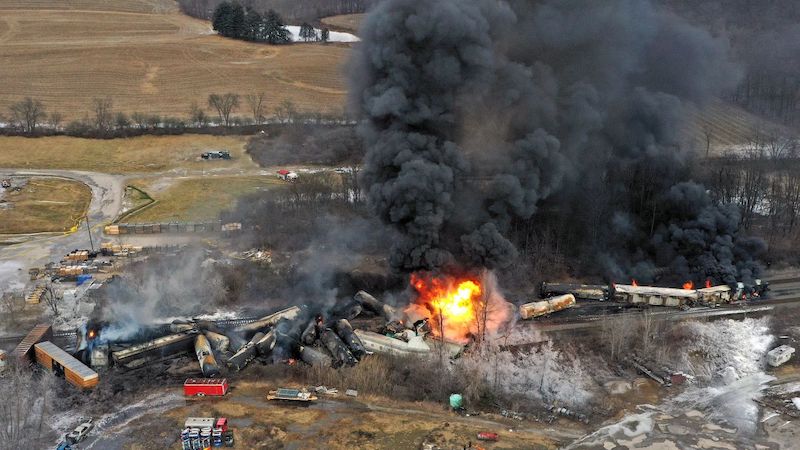
Though the long-term plan for our nation’s nuclear waste still hangs in the balance, that has not stopped the Department of Energy (DOE) and other agencies from testing various technologies with the assumption that the waste will be transported soon. It seems premature to have the transport option for waste that has no destination.
The DOE has just announced the final testing of a train meant to transport spent nuclear fuel (SNF), used fuel from commercial nuclear reactors. The “Atlas railcar” is being dubbed “one of the safest trains ever built” by the agency.
It appears, based on the previous article, that the DOE plan is to use these train cars to transport waste to designated Consent Based Siting facilities once those are designated, which has been a concerted effort from DOE. It also states that “Atlas could be cleared for operational use before the end of the year.” The simulated test was successful, which transported a 480,000 lb test load roundtrip from Colorado to Idaho. However, it is hard to trust the system when only one major test is the standard for which something so important is considered “completing its final testing.”
Not only is this a serious case of putting the cart before the horse, but there are still moderately regular train derailments occurring across the country. An average of 3 trains are derailed a day according to the US Senate Committee on Commerce, Science and Transportation. That’s an average of almost 1100 derailments a year, with almost half of those containing hazardous materials.
To date, none have involved spent nuclear fuel or low-level nuclear waste. Three train derailments occurred in two weeks back in February. Two of the incidents involved hazardous materials, showing that rail transport is not the infallible travel method that the DOE has claimed. Hyattsville, Maryland just suffered a freight train derailment on September 23rd. No injuries were reported, but 16 railcars and a locomotive were wrecked and a cleanup had to be performed for the plastic pellets that spilled out of the cars. The disaster led to road closures and hindered many citizens from being able to go to work and/or perform necessary tasks. Though those closures will be (hopefully) short-lived, a nuclear pile up would lead to mass evacuations and a public emergency for surrounding areas.
The most detrimental train accident in recent US history, the East Palestine, Ohio accident, remains problematic to the citizens and environment almost 8 months after the derailment. There have been advanced water purification efforts, with Ohio having to send water to nearby West Virginia for purification. Ohio’s senators have even been calling on the EPA to declare a public health emergency because of the ambiguous health outcomes for residents. Though there were no major injuries or deaths in the immediate aftermath of the accident, long-term exposure to the compounds released “could be associated with numerous medical conditions, including leukemia and liver cancer.”

With how detrimental the East Palestine disaster has been, imagine how much worse the aftermath would have been if the train had been carrying low-level nuclear waste, or worse, spent nuclear fuel. While I am sure that potential nuclear rail routes would be closely monitored and maintained, it just seems unrealistic to insinuate that the train transport would be a 100% safe option. With how American infrastructure has been degrading over the past 20 or so years, especially given the climate crisis and increased severe weather incidents, it is a likely possibility that train wrecks will only increase with time.
